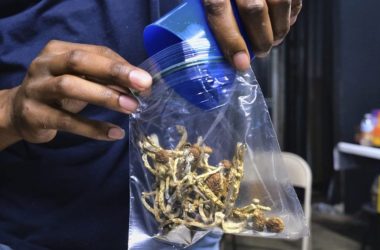The Trump administration will set limits on the amount of “forever chemicals” producers of the toxic substances can discharge into the water, the Environmental Protection Agency (EPA) announced Monday.
The administration said it will set discharge limits for a class of toxic chemicals known as PFAS. The limitations will apply to companies that make these substances, as well as metal finishers.
In a press release announcing the move, the EPA also said it will evaluate whether additional limits are necessary to reduce releases of PFAS.
PFAS, which stands for per- and polyfluoroalkyl substances, is the name of a family of thousands of chemicals that can persist in the environment for hundreds or thousands of years without breaking down.
These chemicals have become pervasive in U.S. waterways and drinking water systems — as well as in all of us. In 2023, the U.S. Geological Survey Determined that they were in the tap water of 45 percent of Americans. Meanwhile, the Centers for Disease Control and Prevention has found that they are in the bloodstream of at least 97 percent of Americans.
Exposure to many PFAS has been linked to adverse health outcomes including cancer, kidney, liver and thyroid problems — as well as fertility and immune system problems.
The Trump administration’s scrutiny of these chemicals comes as it seeks to implement its “Make America Healthy Again” agenda — under which the president and others have expressed concerns about Americans’ exposure to toxic chemicals.
At the same time, however, the administration has taken other steps to deregulate the power and chemical industries, which could expose Americans to additional harmful substances.
The Biden administration similarly announced in 2021 that it planned to propose a rule that limited releases of PFAS — but it never actually did so.
So, if the Trump administration completes the rule, it will have gone further to address releases of the chemicals than its predecessor.
However, the Biden administration did take significant steps aimed at reducing Americans’ exposure to PFAS. For the first time ever, it required water providers to filter out these substances.
It also designated two specific PFAS as “hazardous” substances, making it easier for the EPA to compel polluters to clean them up — or foot the bill for the agency’s work to do so.
It’s not entirely clear whether the Trump administration plans to uphold these Biden-era rules, change them or eliminate them.
The press release Monday said the agency would “address the most significant compliance challenges” for drinking water systems laid out in the first rule. It did not say how exactly it planned to do so.
In a press release Monday, EPA Administrator Lee Zeldin vowed to tackle the issue.
“I have long been concerned about PFAS and the efforts to help states and communities dealing with legacy contamination in their backyards,” Zeldin said.
“This is just a start of the work we will do on PFAS to ensure Americans have the cleanest air, land, and water,” he added.
In addition to the discharge limits, the EPA said in its press release that it would designate an agency leader on the issue who would be in charge of managing its PFAS policy.
It also said it planned to implement a testing strategy to learn more about PFAS-related hazards and exposures — as well as learn more about air emissions of these substances.
And it said it would move forward with a process that could ultimately lead to regulation of PFAS in sludge that’s used as fertilizer. The Biden administration issued a draft report in January that found that using PFAS-laced sludge at farms could pose risks to people who drink milk or eat beef or eggs from these farms.
The Trump administration said Monday that it would carry out the public comment period on that draft report and “determine a path forward based on comments.”





